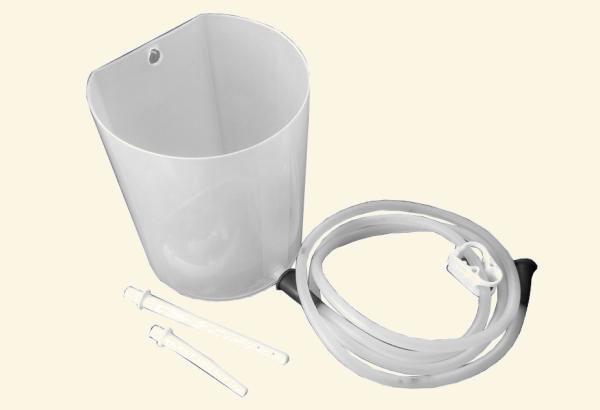Note:- These techniques should only be done under the supervision of a qualified instructor or practitioner.
What is basti kriya?
Basti is one of the six Hatha Yoga cleansing techniques (shat-kriya/shat-karma). This technique uses water (and or herbs) to clean the colon and the lower intestine. It can be used therapeutically for working with a number of chronic problems, (seek further guidance if you want to use it for therapeutic problems), particularly Vata-related disorders.
The modern version of Basti is to use the enema, but it used to be done by squatting in a river and creating a vacuum-like suction with the abdomen to draw water in through the anus. To do this you would use Nauli kriya, Uddiyan bandha, or Agnisar kriya (techniques where you use abdominal contractions and churning motions) to draw water in, where you would hold it for some time 5-30 minutes before releasing it out.
This is not a particularly easy technique to master, so today most people would prefer to use an enema, where you use a catheter or tube to siphon water into the colon, which has similar benefits. This technique is also used in Ayurveda, with medicated enemas, and oil enemas for treating a number of different ailments.
More About Colonic Enema
Enema is the insertion of fluid into the rectum and colon via the anus and is used for general health maintenance as it has a positive effect in helping the body to prevent many different types of diseases. It does this by clearing one of the ways for the body to eliminate ‘toxins’ properly. Otherwise when you are constipated the ‘toxins’ will be circulated around the body and cause other problems from headaches, to bad breath and even nervous system problems. More specifically it is used to cure constipation, piles, and worm infestation.

Water enema cleans the rectum and lower part of the intestines of foreign matter without affecting the other organs.
Technique for enema
- Lie down either on the left side or in a tabletop position to take the Enema. Place the Enema pot above the height of the anus so the gravity will let the water enter. Insert the tube into the anus, and open the valve so that the water gradually enters the colon. You may feel some cramping, you can slow down or stop the flow of water and try to relax for some time before continuing.
- After the water has drained into the body you should try to retain it for some time (increase time with experience 5-45 minutes) before going to the toilet and releasing the water along with any stool, try not to apply pressure.
After the Enema lie down for 15 minutes, some people may experience cramping if their body is at all blocked, this is normal, try to rest.
The enema should be done a minimum of 3 hours after eating but is best first thing in the morning (after a normal bowel movement). Avoid eating immediately afterward and leave the body some time to rest.
*Similar benefits can also be achieved by practicing Laghu Shankh Prakshalan; but that practice will drain more water out of the system because of the very salty water passing through the intestines (this is because of the osmotic effect, water flows from high concentration to low concentration, imaging a raisin swelling up if kept in water because of high concentration of sugar; Similarly the salt in the stomach and intestine will pull more water out from the body). As a result of this, the body might feel weak for some time but will usually recover after an hour or two.
**The Basti Kriya is very useful for someone doing extended fasting, as regular bowel movements may stop, and the body no longer has this method of eliminating emotional or mental ‘toxins’ from the body (which usually go out with the normal food waste), by using Basti or enema you can easily expel those ‘toxins’ out.
